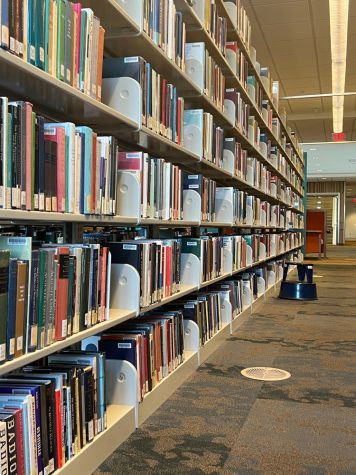GV awarded global fellowship for research on equity among K-12 educators
Feb 28, 2022

The Grand Valley State University Center for Educational Partnerships has been selected as one of 10 cohorts for the 2022 Steelcase Social Innovation Fellowship for their efforts to address the shortage and retention of educators of color in local communities.
This year, Steelcase’s innovation challenge will focus on issues surrounding equity in higher education.
The four-month fellowship, which is the second phase of the Equity in Education Challenge, will provide its cohorts with the tools, finances and support needed to carry out their individual projects.
For GVSU’s Center of Educational Partnerships, the resources and global networking from this fellowship will help further their research and community outreach to find better ways of supporting current and future educators of color.
Chasity Bailey-Fakhoury, associate professor of education, said the team’s work will center on how to increase educator retention at every level, especially when educators are first entering the field.
“We already face a quick turnaround in the first three years and we see that about 19% of educators of color who come in each year will leave the profession,” Bailey-Fakhoury said. “We want to try to mitigate that, so you have to create an environment that’s welcoming and supportive and where folks have a sense of belonging.”
University students of color who’re working towards their education degrees also face barriers of entry that Bailey-Fakhoury and the rest of the team hope to address.
Bailey-Fakhoury said not feeling a sense of belonging in their future career or feeling as if their expertise is not appreciated, plays a big factor in students of color leaving education for other fields.
With this fellowship, GVSU’s Center of Educational Partnerships is working to identify ways to keep future educators on this career path by ensuring they feel supported during their teacher preparation.
There are benefits of having more diversity within K-12 educators, both for the growing number of students of color and their communities, Bailey-Fakhoury said.
Both Bailey-Fakhoury and Mai Mah, Associate Director of the Center of Educational Partnerships, said that having diverse representation in the classroom can help young students of different backgrounds feel seen and create spaces of greater racial and ethnic understanding.
“I was pushed pretty hard to assimilate by my family and I don’t think it was until I got into my late twenties and I moved to New York City that I was kind of like, ‘I don’t have to hide. I can be myself and I bring something special to the table,’” Mah said. “I don’t want students to have to wait that long. In this country we have to learn how to live and respect each other and I really feel like education is the jumping-off point for that.”
Community outreach has played a crucial role in the team’s work.
The Center has partnered with KConnect, an advocacy organization that focuses on bringing equity to Kent county schools and teaches clubs in Grand Rapids Public Schools that work to promote education careers to middle and high school students.
Bailey-Fahkoury said she hopes that the fellowship’s work can inspire those in and around the GVSU community to both create inclusive spaces for historically marginalized groups as well as better support educators.
“We can all name one teacher who has left an indelible mark on each one of us,” Bailey-Fakhoury said. “It would behoove us to lift teachers up and demonstrate the respect for the profession that has been lost.”
Paralleling the fellowship, the team is also working with students in the GVSU College of Education to start a student-led organization called Educators of Color Network to help address certain issues among GVSU students.
Mah said she is also hopeful that the fellowship can also inspire change in diversifying education on a state level.
“I think the great potential for me is that this kind of work that we’re doing and other places are doing could have a positive systemic change in the way we do teacher preparation and hire and retain teachers at the state level,” Mah said. “If we can find this information and share it with the state superintendent and state legislators, we can help them know the importance of this and make overarching change.”























